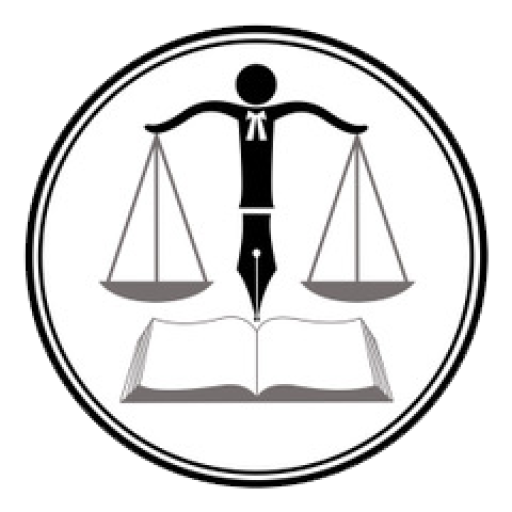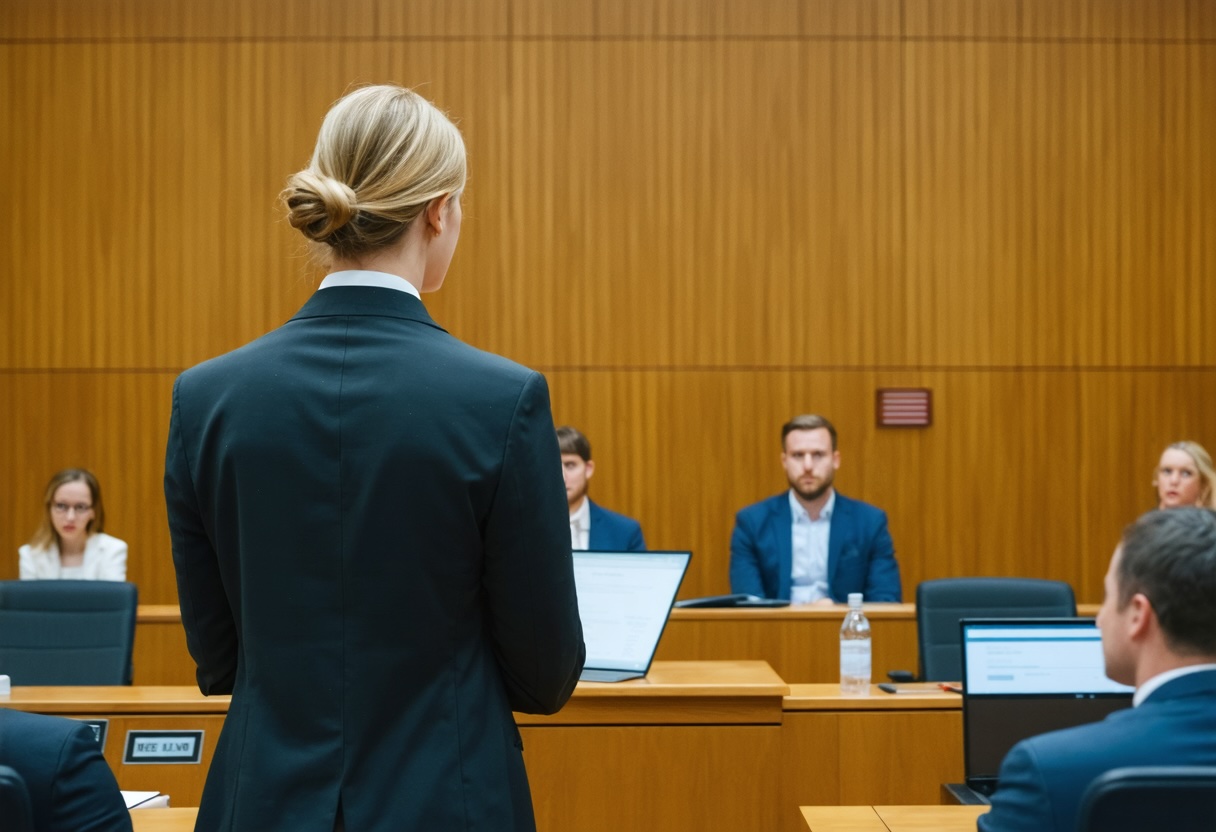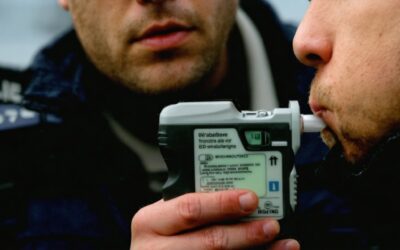This week’s top three summaries: R v IMB, 2025 ONCA 678: #cross & #demeanour, R v Daignault, 2025 ABCA 328: #cross & Vetrovec, R v Penner, 2025 YKCA 14: 271 #relating to evidence
R. v. I.M.B., 2025 ONCA 678
[October 1, 2025] Reliance on Evidence when Curtailed Cross-Examination; Demeanour of the Accused [C.W. Hourigan, P.J. Monahan, and J. Dawe JJ.A.]
AUTHOR’S NOTE: Limits on Curtailing Cross-Examination and the Use of Demeanour in Assessing Credibility
This case is a strong reminder of the fundamental nature of cross-examination as part of the right to make full answer and defence under s.7 and s.11(d) of the Charter.
1. Curtailing Cross-Examination
In sexual offence trials, it is common for complainants to become emotional or require breaks to compose themselves. However, in this case, a break during cross-examination evolved into an application by the Crown—supported only by a police officer’s affidavit relaying hearsay from the complainant—that continuing cross-examination risked her pregnancy. The trial judge accepted this evidence and terminated the cross-examination.
The Court of Appeal held that this ruling deprived the accused of a fair trial. The decision rested on inadmissible hearsay and improperly accepted the truth of the complainant’s claim without medical or direct evidence. More importantly, it cut off the accused’s right to test the credibility and reliability of the central witness. The Court reaffirmed that cross-examination is an indispensable element of trial fairness and cannot be restricted on the basis of untested or speculative evidence.
2. Demeanour Evidence and Credibility
The appeal also addressed the trial judge’s reliance on the accused’s demeanour in disbelieving his testimony. While demeanour can be one factor in assessing credibility, it must be treated with extreme caution. The Court reiterated that:
-
Demeanour is inherently unreliable, particularly under the pressure and stress of criminal proceedings.
-
A trial judge should only rely on demeanour where there is a clear, objective, and articulated basis connecting observed behaviour to credibility.
-
Superficial observations—such as “unusual terminology” or asking for a question to be repeated—cannot reasonably sustain a finding of disbelief.
Where a trial judge acknowledges that an accused “testified well overall,” yet disbelieves the evidence based on subjective impressions of demeanour, the reasoning is not likely to withstand appellate scrutiny.
Takeaway
This decision reinforces two critical points for trial defence work:
-
Cross-examination cannot be curtailed without compelling, reliable, and properly admissible evidence justifying the restriction.
-
Demeanour-based findings must be anchored in logic and evidence, not speculation or instinct.
Together, these principles safeguard the integrity of the truth-seeking process in criminal trials.
R v Daignault, 2025 ABCA 328
[September 29, 2025] Corroboration of Vetrovec Witnesses, The Right to Meaningful Cross-Examination, and After the Fact Conduct as Evidence of a Particular Offence [Jolaine Antonio, Kevin Feehan, and April Grosse JJ.A.]
AUTHOR’S NOTE: Vetrovec Corroboration, Unresponsive Witnesses, and the Perils of After-the-Fact Conduct
This Alberta Court of Appeal decision is a valuable reminder of three interrelated trial issues: the limits of Vetrovec corroboration, the treatment of unresponsive witnesses, and the dangers of relying on after-the-fact conduct as evidence of guilt.
1. Vetrovec Witness Corroboration
Vetrovec witnesses are those recognized to be untrustworthy due to their criminal history or self-interest in the case (such as facing related charges). Their evidence cannot be safely relied upon unless there is independent confirmation that restores the trier of fact’s faith in their truthfulness.
The Alberta Court of Appeal clarified that while corroboration need not confirm the material aspects of their testimony, it must still restore confidence in the truthfulness of the relevant portions of their account—the parts implicating the accused. The practical effect of this formulation is that the corroboration must still touch, in some meaningful way, the material evidence on which guilt depends.
In this case, the trial judge relied on the consistency between two Vetrovec witnesses as corroboration. However, both had access to disclosure and were aware of each other’s police statements before testifying. The Court found this undermined the reliability of the supposed corroboration. Moreover, the trial judge’s reasons did not adequately explain how or why this evidence restored her faith in the material aspects of their testimony.
2. Unresponsive Witnesses and the Right to Cross-Examination
The decision also addresses the treatment of a Crown witness who essentially refused to participate in cross-examination—answering “sure” to every question and explaining that the word meant “whatever the questioner wanted it to mean.” The Court suggests that this was no different than refusing to answer questions at all.
Trial judges must explicitly engage with the implications of such unresponsiveness, applying a structured analysis that considers:
-
Reasons for unresponsiveness (if it is deliberate, it weighs heavily against the witness);
-
Impact on the fairness of the trial (particularly the importance of the evidence); and
-
Possible amelioration, including striking the evidence, issuing a limiting instruction, or declaring a mistrial.
The trial judge’s failure to engage in this analysis before proceeding was a significant error.
3. After-the-Fact Conduct
Finally, the Court emphasized the danger of relying on after-the-fact conduct as indicative of guilt. While post-offence behaviour may sometimes be relevant, it must be treated with extreme caution. The trial judge here relied on such conduct—finding it “completely out of proportion” to mere possession of stolen property—as evidence of a guilty conscience.
The problem is that after-the-fact conduct is ambiguous and susceptible to multiple reasonable interpretations. The Villaroman framework requires consideration of all reasonable alternatives, and courts must avoid drawing conclusive inferences from inherently equivocal behaviour. The trial judge’s reasoning here was precisely the kind of conclusive treatment appellate courts have repeatedly warned against.
4. Outcome
Given the cumulative errors—misapplied Vetrovec corroboration, failure to deal properly with an unresponsive witness, and improper reliance on after-the-fact conduct—the conviction was set aside and a new trial ordered.
I. Introduction
[1] The appellant, Robert Gordon Daignault, was convicted of manslaughter in relation to the death of Kasif Hirani. The appellant appeals that conviction, arguing the trial judge improperly relied on speculation and the testimony of two Vetrovec witnesses. One of the witnesses effectively refused to respond to cross-examination. Both witnesses gave evidence the trial judge acknowledged was unreliable. The appellant submits that neither witness’ account was meaningfully corroborated.
[2] We allow the appeal. The trial judge misapprehended and misapplied the principles from Vetrovec v The Queen, [1982] 1 SCR 811 [Vetrovec], erred in addressing the cross-examination issue, and drew inculpatory inferences without considering exculpatory ones. A new trial is ordered
B. Trial
[13] The appellant was tried by judge alone. Ms. Tinkler and Mr. Christal testified, providing the only direct evidence implicating the appellant in Mr. Hirani’s death. The appellant did not testify
[14] Mr. Christal testified that after he left the pub on the evening of December 28, Ms. Tinkler invited him to Ms. Ogle’s residence. He went there and found Ms. Tinkler in the back alley standing beside a vehicle. He got into the back of the vehicle. A man he did not know was seated in the back. The appellant was in the driver’s seat. Ms. Tinkler got into the front passenger seat, and the appellant drove the vehicle away. Mr. Christal testified he did not know what was going on until Ms. Tinkler and the appellant yelled at the man in the back seat, demanding his banking information. The man threatened to retaliate against Ms. Tinkler. The appellant then turned down a rural road, stopped, “ripped” the man out of the car and instructed Mr. Christal to also get out. Mr. Christal testified the appellant pulled out a knife and started repeatedly stabbing the man. The man was left laying in a ditch, not breathing, as Mr. Christal and the appellant got back into the vehicle and drove away
[15] Ms. Tinkler testified to two versions of events. Initially, she testified that when she and Mr. Hirani were at Ms. Ogle’s home, she got a text message from the appellant telling her to come outside. When she and Mr. Hirani went outside, the appellant and Mr. Christal were there. One of the men instructed them to get into Mr. Hirani’s car. They did, and the appellant drove all four of them away. During the drive, Mr. Hirani was forced to disclose his banking information. At some point, the appellant stopped the car, and Mr. Hirani and Mr. Christal got out. Ms. Tinkler was not sure if the appellant got out also. She testified she did not know what happened while they were stopped, saying she “didn’t look back” but she “possibly” heard screaming. Eventually, Mr. Christal got back into the car.
[16] When examination-in-chief continued after a weekend break, Ms. Tinkler’s evidence changed. She testified she was angry with Mr. Hirani and made plans to meet him and “teach him a lesson” by robbing him. She “probably” told both Mr. Christal and the appellant about her plans. When she and Mr. Hirani went outside at Ms. Ogle’s residence, Mr. Hirani was “robbed of his keys”. She and all three men got into his car, which Ms. Tinkler said was not part of the plan. After the appellant started driving, she testified the vehicle stopped a number of times. The first time, Mr. Hirani tried to escape, and Mr. Christal chased after him, bringing him back to the vehicle. The second time, Mr. Christal got out of the car and put Mr. Hirani in the trunk, “because he wouldn’t stop screaming”. The car stopped again when they could no longer hear Mr. Hirani in the trunk. Mr. Christal got out of the car. Ms. Tinkler could hear Mr. Hirani screaming again. She believed Mr. Christal was stabbing him. She thought the appellant also got out of the car for a couple of minutes “to help” Mr. Christal. Mr. Hirani did not return to the car.
[17] At the end of trial, the Crown amended its indictment to charge the appellant with manslaughter instead of murder. The Crown’s theory was that the appellant, Ms. Tinkler, and Mr. Christal set out to rob Mr. Hirani and Mr. Hirani was killed during the robbery.
C. Decision Below
[19] The trial judge found Mr. Christal and Ms. Tinkler were “inherently untrustworthy” witnesses: Trial Reasons at para 7.
[20] Mr. Christal had an apparent animus towards the appellant and was an accomplice with specific knowledge of the offence from which it would be easy to falsely implicate the appellant. He “told a litany of lies” in his statements to police, including regarding his whereabouts and involvement with Mr. Hirani’s death. His evidence at trial was inconsistent, with Mr. Christal shifting blame and downplaying his involvement. The trial judge wrote, “It is clear that I must approach Mr. Christal’s evidence with extreme caution”: Trial Reasons at paras 56-73.
[21] The trial judge found Ms. Tinkler’s evidence was “also laden with credibility concerns”. She had a lengthy criminal record that included crimes of dishonesty. She admitted to not liking the appellant and was also an accomplice with specific knowledge of the offence. Like Mr. Christal, Ms. Tinkler told “many lies” in her statements to police, including about whether she knew Mr. Hirani, her whereabouts on the night in question, and her involvement with Mr. Hirani’s death. Her testimony at Mr. Christal’s trial was different than her testimony before the trial judge. Even her testimony before the trial judge was inconsistent, with the “new version” of events emerging partway through examination-in-chief. Ms. Tinkler became angry and frustrated when confronted with some of her lies on cross-examination, later refusing to answer questions, and then simply answering “sure”. This conduct “rendered it impossible for the Defence to conduct a meaningful cross examination”. As a result, the trial judge decided to give no weight to the “new evidence” Ms. Tinkler gave after the weekend break. The trial judge wrote, “Like Mr. Christal’s, I must approach Ms. Tinkler’s evidence with extreme caution”. She had “little confidence” Ms. Tinkler was telling the truth: Trial Reasons at paras 74-96.
[22] In light of the nature of the direct evidence, the trial judge held that a “key issue” was to determine whether there was “other, independent, evidence, confirming the testimony of the Vetrovec witnesses”….
[23] The trial judge noted the testimony of Mr. Christal and Ms. Tinkler was consistent on certain points, including that the appellant was driving Mr. Hirani’s car when they left Ms. Ogle’s residence, was involved in the robbery, and continued to drive the car after Mr. Hirani was killed: Trial Reasons at para 97. She held that “[i]ndependent confirmatory evidence”, including video recordings, cell phone records, evidence from the scene, receipts, and other witness evidence, confirmed certain parts of the Vetrovec testimony unrelated to the appellant’s involvement: Trial Reasons at paras 99, 103, 106, 109, 118, 122, 126, 130.
[26] For her conclusion that the appellant was involved in executing the robbery, the trial judge found there was “sufficient independent evidence confirming” the evidence of Mr. Christal and Ms. Tinkler that the appellant was driving Mr. Hirani’s car throughout the period when Mr. Hirani was taken from Ms. Ogle’s residence to the remote area where he was killed. She found support in her inference that the appellant had been using one of Ms. Tinkler’s phones earlier in the evening, the fact that Ms. Tinkler ended up using that same phone at 4:00 AM, the “reasonable inference” that Ms. Tinkler and the appellant therefore were together during the intervening hours, the fact that the appellant was captured on video entering the driver’s side of Mr. Hirani’s vehicle at around 4:00 PM the day after Mr. Hirani was killed, and the lack of evidence suggesting anyone transferred the vehicle to the appellant after Mr. Hirani was killed. She held the only reasonable inference was that the appellant “took possession of that vehicle when Mr. Hirani was taken away from Ms. Ogle’s residence shortly after 1 a.m. on December 29” and remained in possession of it thereafter: Trial Reasons at paras 201-205.
[28] The trial judge went on to find the appellant guilty of manslaughter on two bases\
[29] First, the trial judge held leaving Mr. Hirani in a remote area, in the middle of winter, without his cell phone or bank cards, was an objectively dangerous act which the appellant knew or ought to have known subjected Mr. Hirani to danger of harm or injury: Trial Reasons at para 208.
[30] Second, the trial judge found the appellant “actively participated in the commission of this brutal murder” by, at the very least, holding “Mr. Hirani as he struggled against the prolonged attack, and then assist[ing] in discarding Mr. Hirani’s body in a ditch”. She came to this conclusion for a number of reasons. The significant injuries sustained by Mr. Hirani suggested there was a struggle, which meant it was reasonable to infer someone held Mr. Hirani to prevent his escape while someone else repeatedly stabbed him. The location of the blood on the roadway and the lack of evidence Mr. Hirani had been dragged meant it was reasonable to infer two people carried Mr. Hirani’s body across the road and placed it in the ditch. Testing revealed the presumptive presence of blood on both sides of the back seat of Mr. Hirani’s vehicle, consistent with two people transferring blood there. The trial judge also found the extent of the appellant’s post offence conduct in fleeing from police on December 30 and January 3 was “completely out of proportion to a level of culpability that one would expect from merely being in possession of a stolen vehicle and using stolen credit cards”. Instead, it was “consistent with that of a person guilty of something far more serious”: Trial Reasons at paras 210-230.
IV. Analysis
[32] The evidence before the trial judge fell into two categories: direct evidence from the two Vetrovec witnesses, and circumstantial evidence consisting primarily of the cell phone records, the video recordings, and evidence of the appellant’s actions after the offence was committed. The trial judge committed errors of law with respect to both categories of evidence. Those errors are fatal to the conviction. A new trial is ordered.
A. Direct evidence – Treatment of Vetrovec evidence
[33] There is no dispute that Mr. Christal and Ms. Tinkler were untrustworthy witnesses. Each had been convicted of manslaughter as accomplices to the death of Mr. Hirani and each had a history of repeatedly lying to police about their involvement. A cautious approach to their evidence was required, according to the principles set out in Vetrovec.
[34] A trier of fact can rely on the testimony of a Vetrovec witness if she finds their testimony is corroborated in ways that restore her trust in the witness: Vetrovec at 826-8. The necessary degree of corroboration is that which is “capable of restoring the trier’s faith in the relevant aspects of the witness’ account” [emphasis original]: R v Kehler, 2004 SCC 11 at para 12 [Kehler]; R v Bonnick, 2004 ABCA 133 at para 9. The trier of fact is entitled to believe the evidence of the disreputable witness, even on disputed facts that are not otherwise confirmed, if she is satisfied the witness is being truthful in that regard based on confirmation of other aspects of his evidence: Kehler at paras 22, 29.[Emphasis by PJM]
[35] In R v Khela, 2009 SCC 4 at para 46 [Khela], the Supreme Court emphasized, “the absence or presence of confirmatory evidence plays a key role in determining whether it is safe to rely on the testimony of an impugned witness.” It explained that Vetrovec “was not meant to imply that any and all evidence is capable of confirming the testimony of a potentially untrustworthy witness” (para 32). The trier of fact “should look for evidence from another source tending to show that the untrustworthy witness is telling the truth as to the guilt of the accused” (para 37). When “looked at in the context of the case as a whole, the items of confirmatory evidence should give comfort to the jury that the witness can be trusted in his or her assertion that the accused is the person who committed the offence” (para 42). The confirmatory evidence needs to “relate to an important and relevant aspect of the impugned testimony” (para) 52.[Emphasis by PJM]
[36] In R v Chau, 2010 ABCA 86 at para 28, this Court summarized the principles from Khela by saying:
…evidence capable of being confirmatory must deal with a relevant issue and must be capable of giving the trier of fact comfort that the impugned witness was telling the truth in regard to the disputed issue or issues in the case. The Court did not say that only evidence bearing directly on the disputed issue was capable of being confirmatory. All evidence called to prove an essential element of the offences charged is relevant and material, although some of it may not be disputed.
[37] As further addressed in R v Mela, 2021 ABCA 38 at para 37 [Mela], the confirmatory evidence must “be capable of restoring faith in the credibility of [the] witness on material facts even if the confirmatory evidence does not itself have to directly confirm those material facts”.[Emphasis by PJM]
[39] Her reasons do not indicate that she considered whether, or found that, her faith in the credibility of Mr. Christal or Ms. Tinkler on material facts was restored. To the contrary, she noted the parade of lies and inconsistencies in their evidence and concluded she must approach their evidence with extreme caution: Trial Reasons at paras 58-89, 96.
[40]…. There is no sense from the trial judge’s reasons that the points of confirmation she identified did any work in restoring her faith in Mr. Christal or Ms. Tinkler’s evidence about the appellant’s involvement. Elsewhere in her reasons, the trial judge noted details of the Vetrovec witnesses’ narratives that were contradicted by independent evidence: see, e.g., Trial Reasons at paras 71, 73, 196, 198. The trial judge rejected those details but did not address how or whether the points of contradiction affected her faith in the credibility of the Vetrovec witnesses on the appellant’s involvement or any other topic. Given the Vetrovec context, it was an error for the trial judge to accept corroborated points as true and accurate, but to fail to assess or to determine whether the combination of corroboration and contradiction could overcome the inherent untrustworthiness of the testimony on the core factual issue of the appellant’s involvement.
[41] This problem came to the fore when the trial judge used the two witnesses’ accounts to corroborate each other. She found “overlap” between their accounts on some important points: that the appellant “was driving Mr. Hirani’s car when they left Ms. Ogle’s residence”, “was involved in the robbery of Mr. Hirani”, and “continued to drive Mr. Hirani’s car after Mr. Hirani was killed and left on the side of the road”: Trial Reasons at para 97. Her analysis of the credibility of the overlapping points was the following: “There is no evidence to suggest Mr. Christal and Ms. Tinkler colluded in the aspects of their respective evidence that corroborate the other”: Trial Reasons at para 98. It is true there was no evidence of an active conspiracy between the two witnesses to align their evidence, but this observation is not fully responsive to the concerns inherent in using Vetrovec witnesses for mutual confirmation.[Emphasis by PJM]
[42]…. However, where the evidence of one Vetrovec witness is tainted because he had knowledge of the other witness’ evidence in advance, that taint is an important factor to consider when assessing whether the evidence can play any role in restoring the trier of fact’s faith in the veracity of the other witness’ evidence: Spence at paras 33, 35, 36, 47, 48.
[43] Here, it was in evidence that both witnesses were convicted in relation to the death of Mr. Hirani. It may be presumed that both witnesses received disclosure, such that each had access to the other’s statements, the entire contents of which were not in evidence. Ms. Tinkler testified at Mr. Christal’s trial; at minimum he was aware of that version of her narrative. The trial judge failed to consider the potential that each witness’ testimony was tainted in the way described in Spence and instead drew comfort from the absence of evidence of active collusion. In so doing, she erred in law.
B. Direct evidence – Remedy for lack of meaningful cross-examinationv
[44] The trial judge found that, during cross-examination, Ms. Tinkler “became noticeably angry and frustrated when confronted with some of the lies that she told police in her earlier statements” and she later “refused to answer any questions”. After speaking with her lawyer, and under the threat of being held in contempt, her participation in the cross-examination “mostly consisted of shrugging and answering ‘sure’ to most questions put to her”. When asked what “sure” meant, Ms. Tinkler answered, “whatever you want it to mean”. The trial judge held, “Ms. Tinkler’s refusal to answer questions, and her general non-responsiveness during cross examination, rendered it impossible for the Defence to conduct a meaningful cross examination”: Trial Reasons at paras 90-92.[Emphasis by PJM]
[45] The trial judge recognized the appellant’s fair trial rights were engaged and decided the appropriate remedy was to give no weight to certain aspects of Ms. Tinkler’s evidence….
[47] Where there has been incomplete cross-examination of a Crown witness, there is no dispositive test for determining whether an accused has been deprived of the right to make full answer and defence or whether the trial has become unfair. A trial judge must exercise discretion as to whether the trial may proceed or whether some other remedial action should be taken – including whether to exclude the witness’ evidence in chief – taking into account a number of factors grouped under three main headings (Duong at paras 23-36, citing R v Hart, 1999 NSCA 45, [1999] NSJ No 60 (QL) at paras 94-112 [Hart]; see also R v Goodstoney, 2007 ABCA 88 at para 93; R v JS, 2014 ONCA 541 at para 7; R v TH, 2017 ONCA 485 at para 37; R v Durocher, 2022 NWTCA 1 at paras 21, 22, 25-33 [Durocher]):
a) Reason for the unresponsiveness: The trial judge is required to consider the reason for the lack of response. If the Crown is responsible for the witness’s unresponsiveness or if the unresponsiveness can be attributed to the witness, that is a factor that weighs against admitting the evidence. On the other hand, if the lack of response to cross-examination is due to illness, age, disability, or to the conduct of the defence, and the other factors are satisfied, there is a tendency to admit the evidence.
b) Impact of the unresponsiveness: The central considerations for the trial judge under this heading are the importance of the evidence to the case and whether there is a satisfactory basis, notwithstanding the unresponsiveness, upon which the trier of fact can evaluate the evidence. The more important the evidence to the prosecution’s case, the more reluctant the trial judge should be to allow it to be given without full cross-examination.
c) Possibilities of ameliorative action: Before concluding that the trial has become unfair or whether there has been a denial of the right to full answer and defence, the trial judge should consider whether the limitation on cross-examination can be remedied or at least ameliorated. Consideration may be given to the utility of an instruction to the jury, striking the witness’s evidence or, if necessary, declaring a mistrial and proceeding afresh without the witness.[Emphasis by PJM]
48] Despite having been provided with the Hart and Durocher decisions, the trial judge did not advert to them or indicate whether or how any of the above considerations factored into her determination of the appropriate remedy. The trial judge observed that because there was no meaningful cross-examination, there was no way for the appellant to test Ms. Tinkler’s “newest version of events”. However, the same prejudice also existed with respect to Ms. Tinkler’s first version of events.[Emphasis by PJM]
[49]….This implies the trial judge may have given weight to Ms. Tinkler’s first testimonial version. But that version was equally untested by cross-examination.
[50] The trial judge erred in law in her approach to remedying the lack of a meaningful crossexamination.
C. Circumstantial evidence
[51] Given the inherent frailty of the direct evidence offered by Mr. Christal and Ms. Tinkler, the circumstantial evidence took on particular significance in this case. Aware of the problems with the direct evidence, the trial judge drew heavily on the circumstantial evidence for making factual findings. Though she cited the applicable law, she erred in applying it.
[53] Where proof of one or more elements of the offence depends exclusively or largely on circumstantial evidence, the trier of fact should exercise caution not to fill in any “blanks” in the Crown’s evidence by too quickly overlooking reasonable alternative inferences. A common way of expressing this caution is to instruct the trier of fact that “an inference of guilt drawn from circumstantial evidence should be the only reasonable inference that such evidence permits”: Villaroman at para 30.
[55] First, at paragraph 200, the trial judge concluded that the appellant, Mr. Christal and Ms. Tinkler “were discussing their plan to convene at Ms. Ogle’s home, and to rob Mr. Hirani, while Ms. Tinkler and Mr. Christal were still at the [pub]” and that “they all came together at Ms. Ogle’s home to carry out that plan”. She based this conclusion on the “phone communications, the movement of the phones, and the events that followed”.
[56] The “phone communications” evidence showed the times of incoming and outgoing messages and the associated phone numbers. The cell tower evidence provided a general idea of the locations of the phones. The cell phone evidence contains no record of the contents of any of these communications. While the evidence can support an inference that the three individuals communicated during this period, it alone cannot support an inference about the contents of those communications….
[57] To infer the contents of the communications, the trial judge seems to have relied, at least in part, on “the events that followed”. We are troubled by the implication that the trial judge used the fact Mr. Hirani was robbed to ground a conclusion that the appellant had planned to rob him….
[58] Even if the fact of the subsequent robbery combined with the cell phone-related evidence could support an inference that the group, including the appellant, were communicating about a plan to rob Mr. Hirani, that would hardly be the only reasonable inference. The trial judge did not address the alternate inferences that the communications were entirely unrelated to the robbery, and that the robbery was not planned, or not planned by the appellant.
[65] The trial judge concluded, without analysis, that the appellant’s post-offence conduct was “completely out of proportion to a level of culpability that one would expect from merely being in possession of a stolen vehicle and using stolen credit cards. Instead, Mr. Daignault’s conduct is consistent with that of a person guilty of something far more serious.” Here, the post-offence conduct evidence was used as circumstantial evidence suggesting consciousness of guilt. Volumes have been written on the dangers associated with reasoning from conduct to consciousness of guilt, to guilt, to guilt of a more serious offence rather than a less serious one: see, e.g., R v Arcangioli, [1994] 1 SCR 129; R v White, [1998] 2 SCR 72; R v White</em,>, 2011 SCC 13; R v Calnen, 2019 SCC 6 [Calnen]; R v Downey, 2021 ABCA 142.[Emphasis by PJM]
[66] There is no prohibition on this chain of reasoning, but to answer concerns about ambiguous inferences and the potential for error, jurors “must be told to take into account alternative explanations for the accused’s behaviour. In this way, jurors are instructed to avoid a mistaken leap from such evidence to a conclusion of guilt when the conduct may be motivated by and attributable to panic, embarrassment, fear of a false accusation, or some other innocent explanation”: Calnen at para 117 per Martin J (dissenting in part, but not on this point). These concerns apply equally to judge alone trials: R v Tubic, 2024 ONCA 833 at para 65.[Emphasis by PJM]
[67] Here, the trial judge overtly used post-offence conduct evidence to distinguish between degrees of culpability – its most fraught use. As noted, she also used his conduct after 4:00 PM to place him at the wheel before 4:00 AM. Given the trial time occupied by this evidence and the weight placed on it in the trial judge’s reasons, conclusory treatment was inadequate to ensure reasoning dangers were avoided.
[68] In short, at various points in the trial judge’s reasons, reasonable alternative explanations should have been considered but were not. The trial judge committed errors of law in handling the circumstantial evidence.
V. Conclusion
78] This was a difficult trial, with problematic evidence. The reasons indicate the trial judge misapprehended and misapplied Vetrovec; erred in remedying Ms. Tinkler’s refusal to participate meaningfully in cross-examination; and drew inculpatory inferences without considering exculpatory alternatives. These errors require a remedy.






